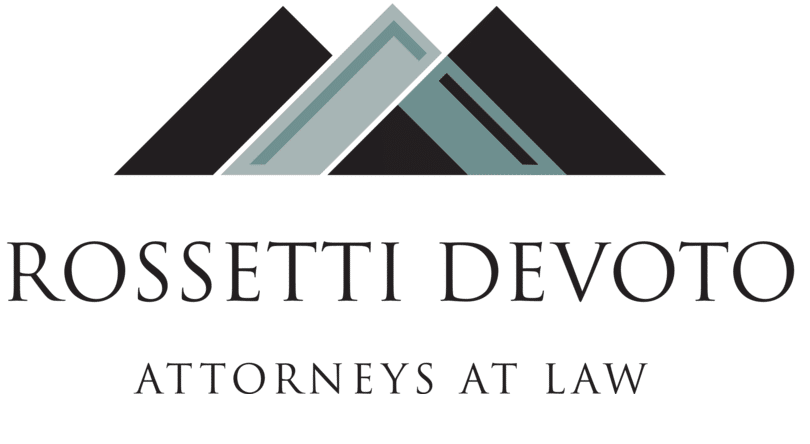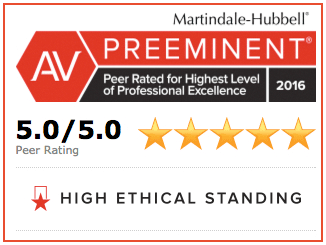Health Maintenance Organizations
Read this short paper written by Louis J. DeVoto about health maintenance organizations.
Health Maintenance Organizations
Louis J. DeVoto
I. BACKGROUND: HISTORY AND TYPES OF HEALTH MAINTENANCE ORGANIZATIONS
While the first pre-paid health plan dates back to a cooperative in Elk City, Oklahoma in 1927, HMOs have only recently become popular. With the passage of the Health Maintenance Organization Act of 1973, 42 U.S. C. sec. 300e-300e-17, industry growth has been dramatic. By 1985, there were 263 HMOs, with more than 18 million members. Since then, there has been significant consolidation within the industry, a trend which should continue for the next several years.
1st Model
Today, there are three basic models of Health Maintenance Organizations presently in use. So, the first is the traditional form of the HMO, the Staff Model. In it, the HMO itself owns and operates its own health care facilities. Moreover, the participating physicians and their support staff are employees of the HMO. Furthermore, the doctors receive payment by salary and may earn a bonus if the HMO shows a profit. So, the relationship between the HMO and the doctor is one of employer and employee, with the HMO having control over the physician.
2nd Model
The second model has the name the Group Individual Practice Association (IPA) or Direct Contract Model. Here, a group of physicians incorporates itself, and then contacts with the HMO to provide care of the members of the HMO in their own offices. The physician group gets payment in a capitation fee, which in turn pays the physician a salary = (i.e., incentive to keep costs low). These doctors may or may not have permission to treat patients outside the Health Maintenance Organization.
3rd Model
Finally, the Group (non-IPA) Model or Network Model provides its members with health care through several groups. The HMO contracts with individual physician groups or entities having provider employees. As payment, the physician receives a “capitation” fee from the HMO, which is a previously agreed upon fixed fee per HMO subscriber. The amount of a doctor’s payment depends on the number of subscribers seen in a month. Additionally, doctors may receive a bonus for “efficiency”.
II. THEORIES OF LIABILITY
There are several different theories of liability that may be asserted against HMOs, each with varying degrees of success.
A. VICARIOUS LIABILITY: Actual Agency
This theory, synonymous with what is commonly known as the doctrine of respondeat superior, provides that an employer may be vicariously liable for the negligent acts of an employee; when such acts happen in the course and scope of employment. The theory of actual agency is most easily established under the Staff Model, although other types of HMOs have been liable.
See Sloan v. Metropolitan Health Council of Indianapolis, Inc., 516 N.E.2d 1104 (Ind.App. 1987). (Under Direct Contract theory, HMO had control over its physicians constituting an employer-employee relationship. Accordingly, HMO could be vicariously liable.); Schleier v. Kaiser Foundation Health Plan, 867 F.2d 174 (D.C.Cir. 1989). (Apply respondeat superior, HMO vicariously liable for the actions of an independent consulting physician when HMO doctor requested a cardiac consultation by an outside cardiologist, creating a “master-servant” relationship.); Gugino v. Harvard Community Health Plan, 380 Mass. 464, 403 N.E.2d 1166 (1980). (HMO subscriber sought advice regarding safety of Dalkon shield from HMO doctor. HMO held vicariously liable for malpractice.); Mduba v. Benedictine Hospital, 384 N.Y.S.2d (1976). (Degree of control over independent contractor similar to group model or IPA).
B. VICARIOUS LIABILITY: Ostensible Agency
In order to make out a cause of action under this theory, the plaintiff will have to prove that (1) the patient looked to the HMO rather than the individual physician for care, and (2), the HMO “held out” the physician as its employee, thereby creating a reasonable presumption in the eyes of the patient that the physician was the agent of the HMO. This theory does not require proof of an actual employer-employee relationship between the HMO and the treating physician and is, therefore, very popular with plaintiffs.
In presenting causes of action under this theory, it is important to stress how the HMO advertised and characterized its relationship with participating physicians, whether the HMO itself represented that it furnished “medical care”, and the public policy reasons behind not allowing HMOs to escape liability by simply referring patients to doctors outside the plan, especially when members participate based on the representation that they will be provided with “complete” health care services. See Boyd v. Albert Einstein Medical Center, 377 Pa.Super. 609, 547 A.2d 1229 (1988).
(Patient referred to participating specialist and subsequently injured. Held: HMO vicariously liable for specialist’s actions, due to advertising as a “total care program” and the representation that providers were employees of the HMO, an apparent agency relationship.); Decker v. Saini, 1991 Westlaw 277590 (Mich. Cir. Ct.). (Participating doctor referred patient to non-member specialist. Held: HMOs cannot escape liability by referral to non-participating doctors.); Raglin v. HMO Illinois, Inc., 230 Ill. App. 3d 642, 595 N.E.2d 153 (1992). (Plaintiffs cannot succeed with claim when HMO specifically informed members that it did not furnish medical care.)
C. DIRECT LIABILITY: Negligence
The theory of corporate negligence in the health care field has traditional application in hospital settings, establishing that a hospital owes an independent, non-delegable duty to its patients to exercise reasonable care in ensuring that the physicians are competent. Also, the hospital has a duty to maintain safe and adequate facilities and equipment, to supervise those practicing medicine in the hospital, and to formulate, adopt, and enforce adequate rules and policies to ensure quality care for the patients.
Against HMOs, direct liability may be asserted on the grounds of negligent screening of participating doctors, negligent referral to an HMO-approved specialist, or negligent deprivation of physician-recommended care. See Harrell v. Total Health Care, Inc., 1989 Westlaw 153066 (Mo.App.), aff’d on other grounds, 781 S.W.2d 58 (Mo. 1989).
(Negligent surgery performed by HMO-approved specialist held by Mo. Ct. of App. to be a valid cause of action against the HMO. However, summary judgment granted to HMO due to statutory loophole granting immunity to non-profit organizations.); McClellan v. Health Maintenance Organization of Pennsylvania, 413 Pa. Super. 128, 604 A.2d 1053, appeal denied, 616 A.2d 985 (1992). (HMO negligent in not fully screening or evaluating physician whom it had held out to be its agent.); Wickline v. State, 192 Cal.App.3d 1630, 239 Cal.Rptr. 810 (1986). (Dicta: “patient who requires treatment and who is harmed when care which should have been provided is not provided, should recover for the injuries suffered from all those responsible for the deprivation of such care, including, when appropriate, health care payors.” 239 Cal.App. 3d 660, 271 Cal.Rptr. 876 (1990).
(Physician recommended extended stay not approved by HMO. Patient committed suicide days later. Court recognized cause of action in negligence against HMO as jointly liable.)
III. LITIGATION HURDLE: Erisa Preemption
Defendant Health Maintenance Organizations attempt to avoid malpractice suits by asserting that the Employee Retirement Income Security Act (ERISA) preempted such claims. The ERISA statute provides a detailed system of civil enforcement which limits who may file suit, the grounds for such suits, and the relief to which a litigant has an entitlement.
ERISA Supersedes
The statute also includes a preemption provision which provides that the ERISA shall supersede all state laws as they “relate to any employee benefit plan.” ERISA 29 U.S.C. sec. 1144(a). Thus, the primary issue in deciding whether a claim is preempted hinges on the language of the statute: whether the state malpractice laws “relate to” the plaintiff’s employment benefit plan in such a way that necessitates preemption. If the state law has a connection with or reference to an ERISA plan, any claim will be preempted.
This is tricky because any connection may trigger preemption, and a court will not just examine laws relating to specific subjects covered by ERISA. Rather, the state law may relate to a benefit plan even if its design is not specifically to affect such plan or even if its effect is only indirect. One court wrote, “A rule of law related to an ERISA plan if it is specifically designed to affect employee benefit plans, if it singles out such plans for special treatment, or if the right or restrictions it creates are predicated on the existence of such a plan.” United Wire, Metal & Machine Health & Welfare Fund v. Moorestown Memorial Hospital, 995 F.2d 1179, 1192 (3d Cir.), cert. Denied, 114 S.Ct. 382 (1993).
Case law addressing this issue indicates that the trend is for federal courts to find claims of direct negligence against the HMO to be preempted by ERISA. However, on the issue of vicarious liability, courts are in dispute.
Courts and Health Maintenance Organizations
Most courts find preemption when a plaintiff seeks to hold an HMO liable for its own negligent administration of cost-containment provisions of an employee benefit plan or with regard to the type and extent of benefits promised. Therefore, claims that the Health Maintenance Organization was negligent in employment or contracting with negligent doctors, knew that the doctors were not qualified or competent, failed to use due care in selecting and overseeing the doctors, or failed to formulate, adopt, and enforce adequate rules and policies to ensure quality care for patients will likely fail under ERISA.
Plaintiffs have a better chance of succeeding with medical malpractice claims under a theory of ostensible agency. A court will only find preemption in these cases if the ostensible agency relationship “relates to” employee benefit plans since it requires an assessment of the benefit plan and the doctor’s performance thereunder. Thus far, most courts, if they have found an ostensible agency claim to be preempted, have justified their findings of preemption based on the rationale that the medical decisions/advice given by the HMO is done in the context of determining the availability of benefits under the plan, as opposed to making direct medical decisions. Courts are therefore, reluctant to hold plan decision makers liable for medical malpractice.
Courts also tend to justify such decisions on public policy grounds, citing that if such claims are not preempted and plaintiffs claims succeed, the Health Maintenance Organizations and their providers will have to carry liability insurance resulting in higher costs to the end user.









